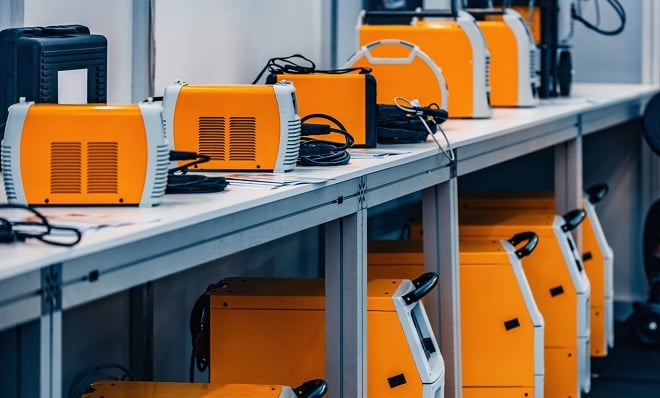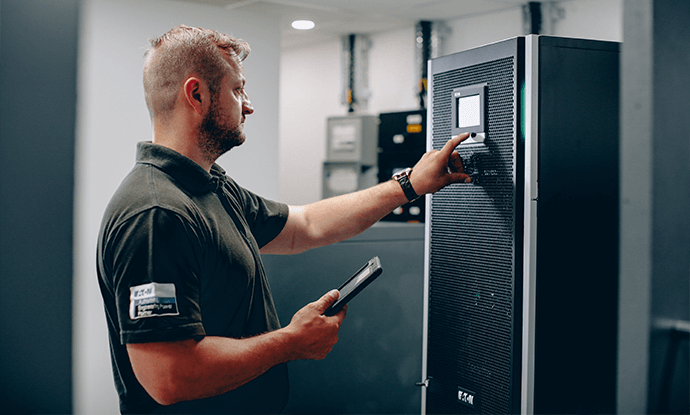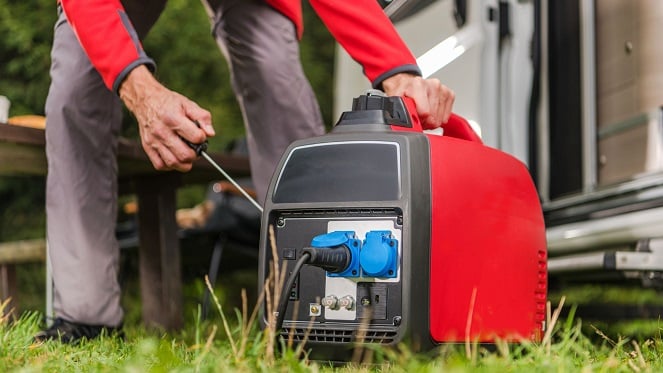
There are many options to keep your workstations and servers running when an unfortunate power outage happens. But which of those options are right for you In this article, we are comparing inverters, UPSs and generators and see which is best for the task at hand.

A power inverter, or inverter, is an electronic device or circuitry that changes direct current (DC) to alternating current (AC). The resulting AC frequency obtained depends on the particular device employed.
The input voltage, output voltage and frequency, and overall power handling depend on the design of the specific device or circuitry. The inverter does not produce any power; the power is provided by the DC source.
A power inverter can be entirely electronic or may be a combination of mechanical effects (such as a rotary apparatus) and electronic circuitry. Static inverters do not use moving parts in the conversion process.
Power inverters are primarily used in electrical power applications where high currents and voltages are present; circuits that perform the same function for electronic signals, which usually have very low currents and voltages, are called oscillators. Circuits that perform the opposite function, converting AC to DC, are called rectifiers.
Inverters, though bulky, are a great way to keep the TV and Wi-Fi running while you wait for the power to come back on. These contraptions can link into the grid and switch over automatically when the power goes out. The load it can bear is dependent on the size of its battery and internal linkage. Often the load is limited to running a handful of appliances before overloading.

Don’t Let Cyber Threats Ruin Your Productivity — Let The Eaton Toy Force Save The Day!
The saving grace of many workstations and servers is the good old uninterrupted power supply (UPS). These devices allow a computer to keep running for at least a short time when the primary power source is lost. As an added bonus, UPS devices also provide protection from power surges.
A UPS contains a battery that "kicks in" when the device senses a loss of power from the primary source. If an end-user is working on the computer when the UPS notifies them of the power loss, they have time to save any data they are working on and exit before the secondary power source (the battery) runs out. When all power runs out, any data in your computer's RAM is erased. When power surges occur, a UPS intercepts the surge so that it does not damage the computer.
Eaton is a leading provider of backup power UPS or uninterruptible power supply. Eaton UPSs deliver high quality, reliable backup power for everything from network closets and server rooms to enterprise and colocation data centres.
Every UPS converts incoming AC to DC through a rectifier and converts it back with an inverter. Batteries store energy to use in a utility failure. A bypass circuit routes power around the rectifier and inverter, running the IT load on incoming utility or generator power.

From big to small, generators keep the power going when we need it most. Electric generators convert mechanical energy to electricity for transmission and distribution over power lines to domestic, commercial, and industrial customers.
Well, to be more specific generators don’t actually create electricity. Instead, they convert mechanical or chemical energy into electrical energy. They do this by capturing the power of motion and turning it into electrical energy by forcing electrons from the external source through an electrical circuit. A generator is essentially an electric motor working in reverse. Some electrical generators, such as the Stortemelk Hydro on the Ash River, for example, are huge and provide enormous amounts of energy by transferring the power created by water turning turbines into electricity.
Residential and commercial generators, however, are much smaller and rely on more traditional fuel sources like diesel to create mechanical power that can then be forced into a circuit and induce an electrical current.
There are a couple of downsides to generators, though. They create noise pollution and are often not allowed to be used in complexes and townhouses.


© Copyright 2024 Tarsus Distribution